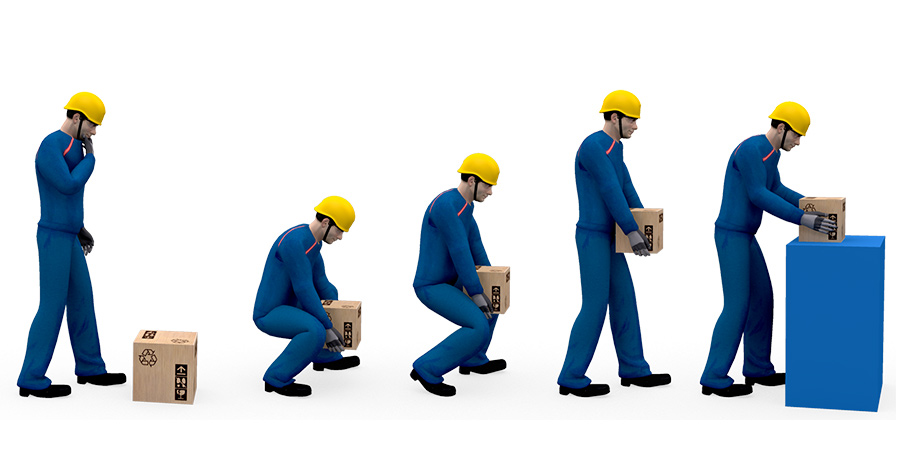

Manual material handling (MMH) means manually moving or handling things by lifting, lowering, pushing, pulling, carrying, holding or restraining. MMH is also the most common cause of occupational fatigue, low back pain and lower back injuries.
Workers frequently cite the weight and bulkiness of objects that they lift as major contributing factors to their injuries. In 1999, for example, more than 4,20,000 workplace accidents resulted in back injuries. Bending, followed by twisting and turning, were the more commonly cited movements that caused back injuries. Other hazards include falling objects, improperly stacked materials and various types of equipment. You should make your employees aware of potential injuries that can occur when manually moving materials including the following:-
When moving materials manually, workers should attach handles or holders to loads. In addition, workers should always wear appropriate personal protective equipment and use proper lifting techniques to prevent injury from oversize loads. Workers should seek help during the following:-
Using the following personal protective equipment prevents needless injuries when manually moving materials:-
Assess where, how long, how complicated can manual handling be.
Manual material handling can result in significant treatment costs; even if those direct costs are only for injuries, there are other costs that apply to any business.
Let’s Check What is Manual material handling hazards, Consider the example of a production worker, Pradeep. His job requires him to lift parts from the floor, bend down and twist his waist several times, and reach out to place the objects on a conveyor.
Now, based on his work, years can go unnoticed without him experiencing an injury, but there are chances that he is prone to ergonomic issues, and slip disc and other issues.
Musco-skeletal disorders and material shifting hazards are on the rise, that involves missed workdays, shoulder, and back injuries along with repetitive trauma and overexertion. This has a knock-on effect on efficiencies and productivity overall.
What helps is manual material handling techniques and ergonomic interventions when it comes to safe working scenarios.
Manual material handling is generally thought to be a non-value-added task, as no cycle of work gets completed directly through it. But what most people forget is that it is an essential and integral part of production, construction, and other business activities.
BE it every bend and every reach, when efficiency is something that is aimed for, the worker can be freed for various other tasks, and can further opt for something that is worthy.
The above mentioned procedure shall help the people to safely handle the material manually. Proper manual material handling training should always be considered to avoid manual material handling hazards and thereby safe work performance.